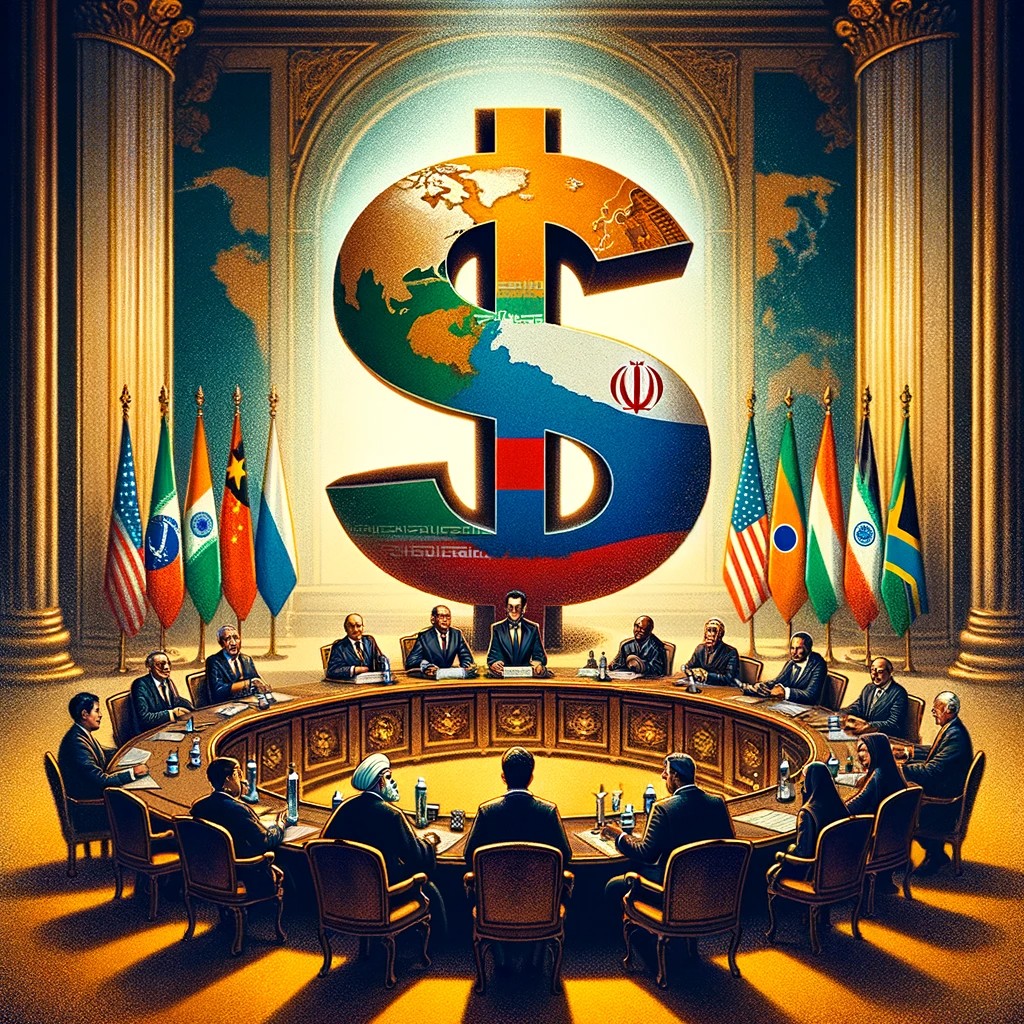The global economic landscape is on the cusp of a seismic shift, with Iran’s recent announcement to join forces with the BRICS nations in a strategic move to challenge the dominance of the US Dollar. As the geopolitical chessboard sees a new player in Iran, the ambition to create a BRICS currency is not just a financial maneuver but a bold statement in the realm of international power dynamics.
Iran Crafting a New Economic Order with BRICS
With Iran now in the fold, the BRICS bloc is gearing up for what could be a game-changing year. This coalition, known for its pursuit of de-dollarization, is exploring the creation of a unified currency – a concept that has been simmering throughout 2023 and is poised for significant developments by the 2024 summit. This isn’t just about introducing a new currency; it’s about rewriting the rules of global finance.
Iran’s involvement is particularly noteworthy. The nation’s deputy foreign minister, Madi Safari, has voiced Iran’s eagerness to be a linchpin in this endeavor. Imagine the audacity of the move – a country once isolated, now at the heart of a potential global economic revolution. This isn’t just about economics; it’s about geopolitical chess, and Iran is moving its pawns strategically.
The inclusion of Iran alongside other expansion nations like Saudi Arabia, UAE, Egypt, and Ethiopia adds new layers to BRICS’ ambitions. While Argentina, following a regime change, stepped back, Iran stepped up, expressing interest in becoming a “banking center” for the alliance. This isn’t just a financial collaboration; it’s a fusion of diverse economic cultures and policies, all unified by a common goal – to challenge the hegemony of the Dollar.
Navigating the Complexities of a Multi-National Currency
The idea of a BRICS currency is fraught with complexities. It’s like trying to harmonize different musical notes into a symphony – challenging but not impossible. The currency would need to hold its value across varied economic landscapes, a task easier said than done. It’s not just about pegging it to gold or another standard; it’s about creating a stable, reliable medium of exchange that can withstand global economic storms.
The New Development Bank, set up by BRICS, could play a crucial role as the issuer of this new currency. However, the logistical hurdles are akin to a Herculean task. It’s not just about creating a currency; it’s about gaining international acceptance and trust, which, in the world of global finance, is the equivalent of climbing Everest.
Another scenario under consideration is the adoption of a BRICS local currency like the Chinese yuan or the Indian rupee as a global reserve. This approach, while seemingly simpler, still involves complex dynamics. It’s not just about replacing the Dollar; it’s about ensuring that the new currency captures the essence of the BRICS ethos – unity and cooperation.
Moreover, the digital transformation of finance opens new avenues. The BRICS Pay system, along with advancements like China’s digital yuan, offers a digital approach to this currency challenge. Leveraging blockchain technology, this could herald a new era in international transactions, blending innovation with practicality.
So, Iran’s entry into BRICS and the pursuit of a unified currency is more than an economic strategy. It’s a bold statement in the world of international relations, a challenge to the established order, and a testament to the ever-evolving nature of global power dynamics. The journey to dethrone the Dollar is not just a financial quest; it’s a narrative of ambition, strategy, and the relentless pursuit of a new world economic order. As the plot thickens, the world watches with bated breath, witnessing what could be a pivotal chapter in the annals of global finance.
Land a High-Paying Web3 Job in 90 Days: The Ultimate Roadmap
